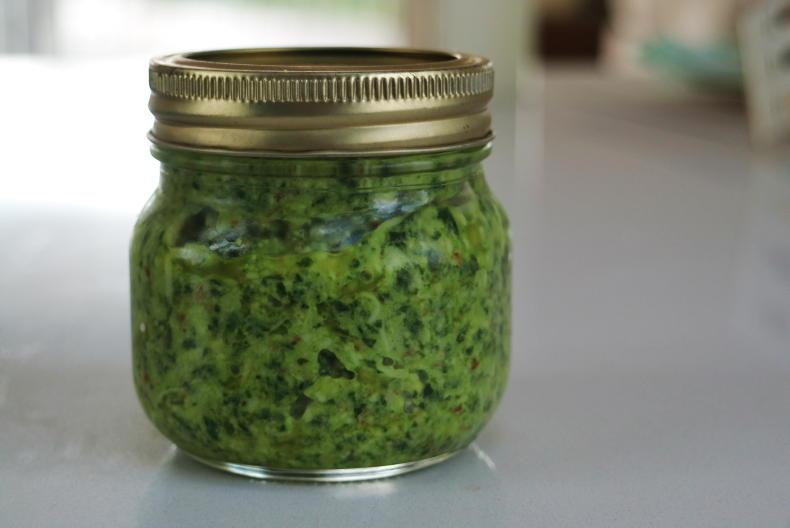I've been making pesto for a long time. Do you know what I've come to realise? None of us are really doing it "authentically". Unless you're chef Samin Norsat, in Liguaria (a region in Italy) and you're making proper Liguarian pesto with a pesto master (if you haven't seen her series Salt, Fat, Acid, Heat on Netflix, do yourself a favour and give it a watch), your pesto is not going to be considered authentic.
But the beautiful thing about a good pesto is this: it's about a balance of specific types of flavour. The nutty cheese and pine nuts mixed with a sweet and bitter, good quality olive oil and aromatic basil? It's a winning combination.
That's why the classic is a classic.
But we live in Ireland. There's no reason we can't use what's available to us here. I was visiting a hydroponic farm recently and the farmer was growing beautifully fresh basil from seed to fully harvestable plant in just 16 days. I took home a few bunches to taste test and this basil did not disappoint!
I used some of the basil right away, but the remainder stayed in my fridge for a few days. It was a bit wilted, so I decided to make some pesto.
Pesto (or its cousin, salsa verde) is a great sauce to make use of herbs or greens which aren't their freshest. I didn't have pine nuts or Parmesan – what I did have was pecorino romano cheese (Irish Cais na Tire would also make a beautiful pesto) and almonds.
You can use any type of green, aromatic, tender herb in a pesto. I mixed the basil with some fresh baby spinach to increase the bulk. Classic pesto doesn't use mustard, but I was always taught to add a dollop of Dijon to my pesto – mustard is an emulsifying agent, so if you like your pesto on thick side, use it. If you like a runnier pesto – don't.
I added some garlic and fresh lemon juice to my pesto, as well. The balance of flavours was right and we've been enjoying our pesto on sandwiches, chicken and in a pasta with green beans and cherry tomatoes.
Here's exactly how I made the pesto (it made around 500g of pesto):
Ingredients
2 bunches fresh basil
200g baby spinach
200g whole almonds, roughly chopped (skin on)
100g finely grated pecorino romano
2 cloves garlic, chopped
1 heaping tbsp Dijon mustard
Juice from 1/2 large lemon
200ml extra virgin oilive oil, or Irish rapeseed oil
Salt and pepper, to taste
Directions:
1. In a food processor, add the chopped almonds, Dijon, lemon juice, cheese, garlic and a bit of the oil (just enough to moisten). Pulse until the nuts are well chopped and the cheese is combined, making a rough-looking paste.
2. Add the greens and turn the food processor on low. While the food processor is running, slowly drizzle the remaining olive or rapeseed oil in.
3. If you feel like the pesto is too thick, add more oil
4. When you've reached a consistency you're happy with, turn off the food processor and add the pesto to a bowl. Season to taste with salt and pepper.
5. The longer this mixture sits (overnight or one to two days in the fridge) the better the flavour will be.






 This is a subscriber-only article
This is a subscriber-only article










SHARING OPTIONS: